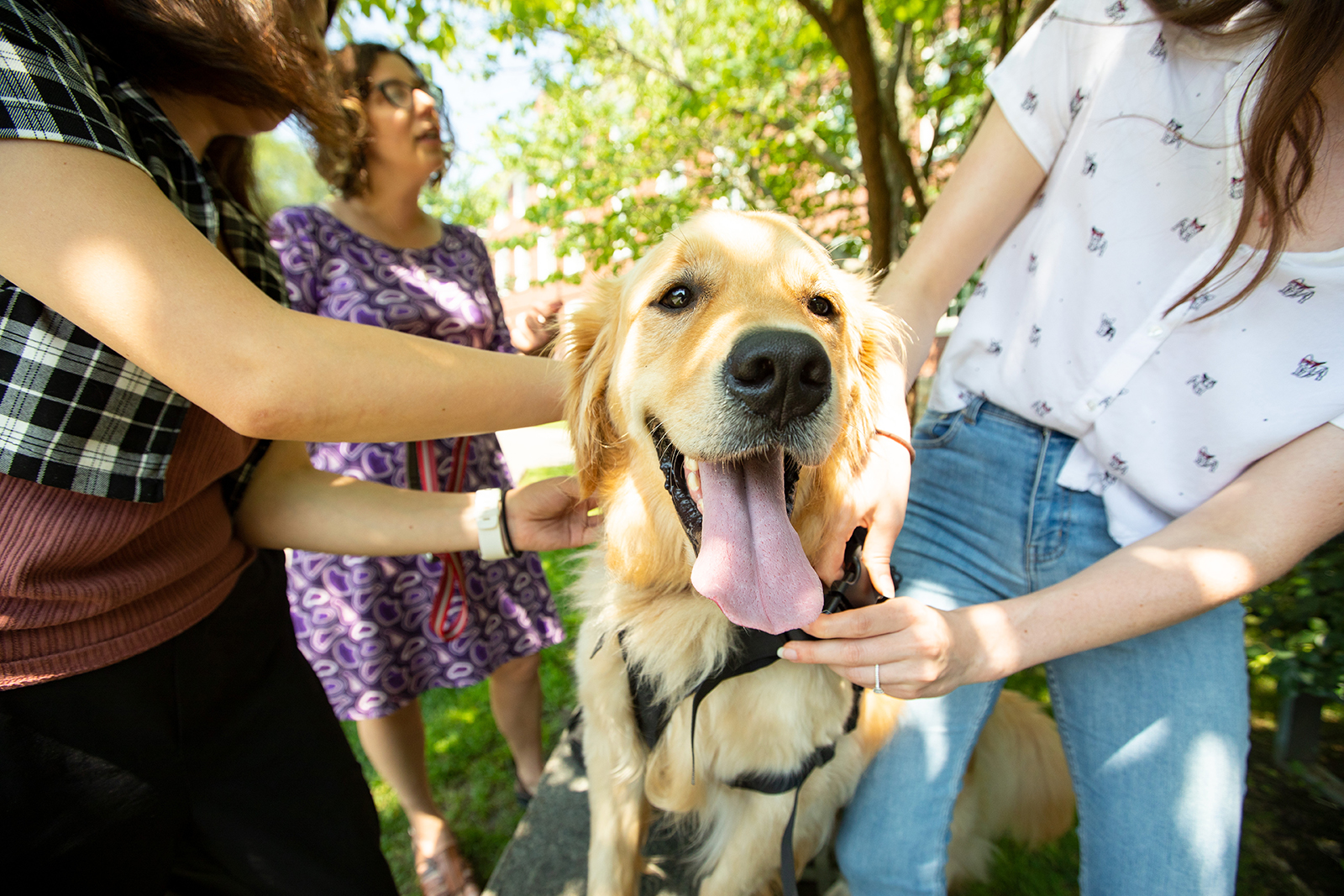PROVIDENCE, R.I. [Brown University] — What is my dog even looking at? Why are they barking? Can they tell when I’m upset? And how does my dog always seem to know when I’m about to go on vacation?
At times to their dismay, most dog owners can only wonder about the answers to these questions. But Sarah Zylberfuden is spending her summer investigating them — and given the importance of dogs in everything from search-and-rescue operations to assisting individuals with disabilities, finding answers could be significant.
As a rising Brown University senior concentrating in cognitive neuroscience and literary arts, Zylberfuden is researching the learning and reasoning abilities of man’s best friend in the laboratory of Assistant Professor of Cognitive, Linguistic and Psychological Sciences Daphna Buchsbaum.
“We’re trying to look at it from a comparative perspective — how dogs are different from other animals considering how domesticated they are, and how their intelligence compares to ours,” Zylberfuden said. “Then, of course, there’s the goal of seeing how dogs can be helpful to us, like with therapy or service dogs.”
Faculty and student researchers affiliated with Buchsbaum’s laboratory at Brown investigate dogs’ learning in a variety of contexts, including their physical problem-solving abilities and understanding of social information. Scientists record dogs’ actions as they interact with people, toys and puzzles, and the choices they make to learn more about their understanding of the world.
Zylberfuden is collaborating with lab members on two current research projects.


